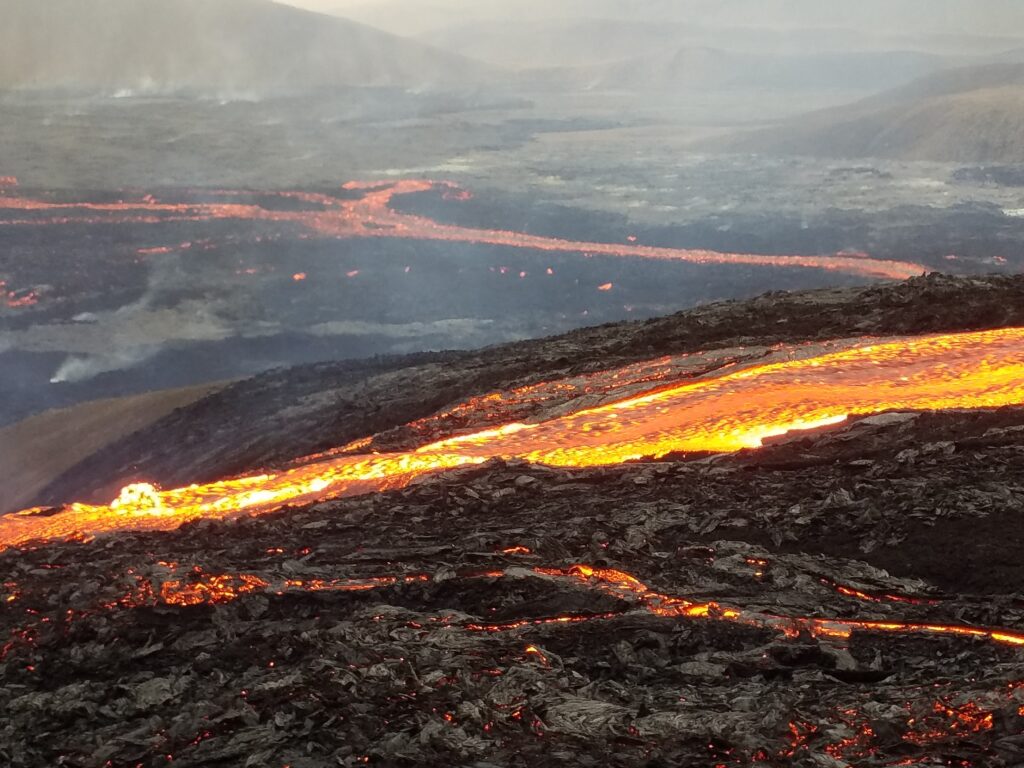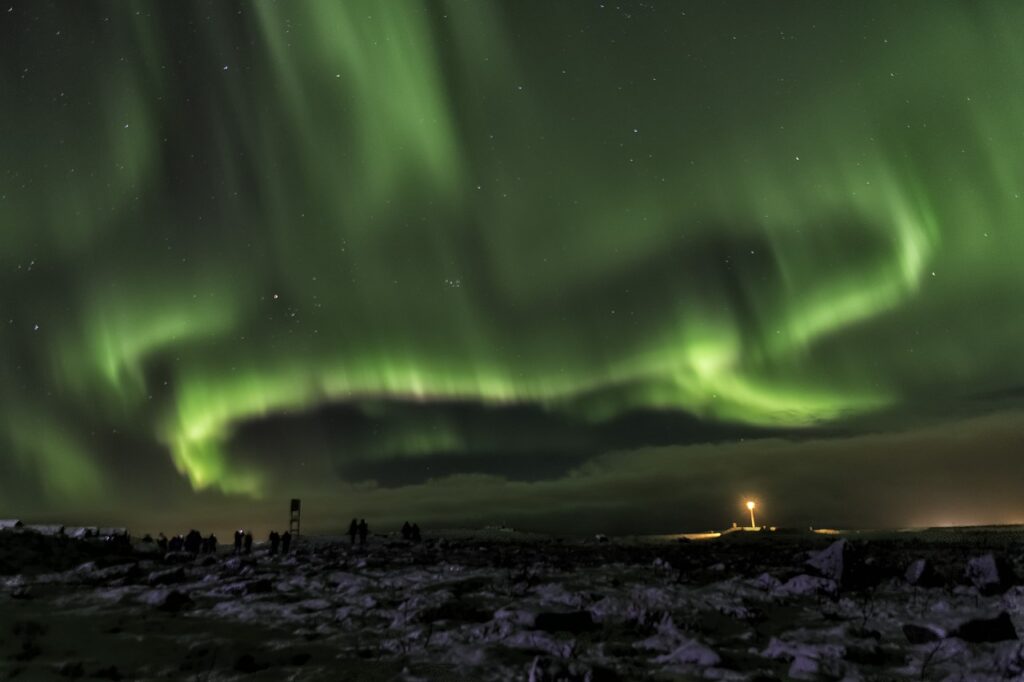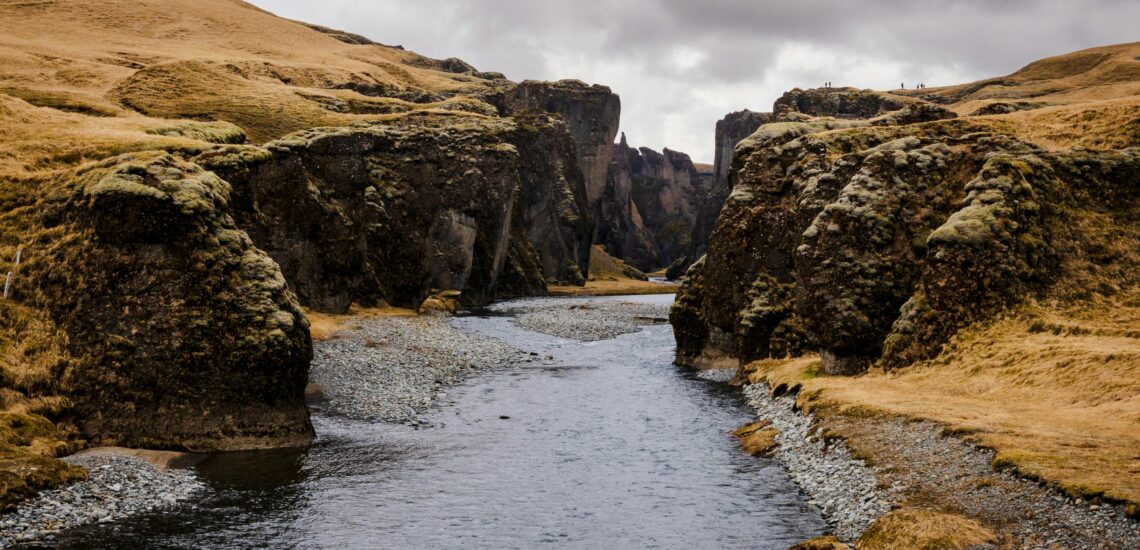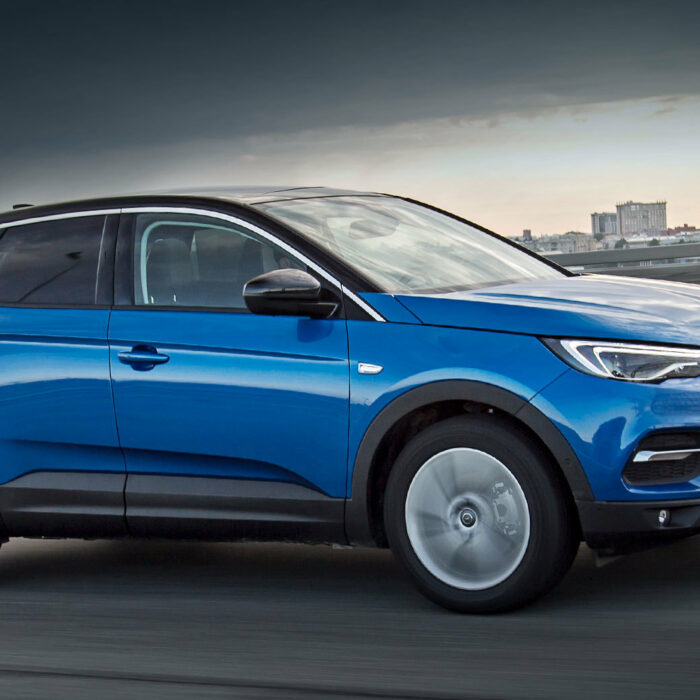İzlanda hakkında kısa gerçekler:
- Nüfus: Yaklaşık 382.000 kişi.
- Başkent: Reykjavik.
- Resmi Dil: İzlandaca.
- Para birimi: İzlanda Kronu (ISK).
- Hükümet: Üniter parlamenter cumhuriyet.
- Başlıca Din: Hıristiyanlık, öncelikle Lutherci.
- Coğrafya: Kuzey Atlantik Okyanusu’nda yer alan İzlanda, buzullar, gayzerler, kaplıcalar ve volkanlar gibi muhteşem manzaralarıyla tanınan, Avrupa’nın en batı ülkesidir.
Gerçek 1: İzlanda’da volkanlar aktif
Ada, Kuzey Amerika ve Avrasya Plakalarının birbirinden ayrıldığı tektonik bir sınır olan Orta Atlantik Sırtı’nın üzerinde yer alıyor ve bu da önemli bir jeolojik aktiviteye neden oluyor.
İzlanda’nın volkanik aktivitesi, hem lavların volkanik deliklerden sürekli olarak aktığı coşkun patlamalar hem de kül bulutları ve piroklastik akışlar üretebilen patlayıcı patlamalar ile karakterize edilir. İzlanda’daki en ünlü yanardağlardan bazıları, 2010 yılında patlayan ve Avrupa çapında hava yolculuğunu aksatan Eyjafjallajökull ve ülkenin en aktif yanardağlarından biri olan Hekla’dır.

Gerçek 2: İzlanda’da çok sayıda gayzer ve kaplıca var
İzlanda, yalnızca popüler turistik mekanlar değil aynı zamanda ev yaşamında da önemli bir rol oynayan gayzerler, kaplıcalar ve jeotermal özelliklerin bolluğuyla ünlüdür.
Ünlü Geysir ve Strokkur gibi İzlanda’nın gayzerleri periyodik olarak sıcak su ve buhar püskürterek muhteşem doğal görüntüler sunar. Hem doğal hem de insan yapımı kaplıcalar da ülke genelinde yaygındır ve sıklıkla banyo ve yüzme gibi rekreasyonel amaçlarla kullanılır.
Üstelik İzlanda, evsel ısıtma ve elektrik üretimi için jeotermal enerjiden yararlanıyor; yer altı rezervuarlarından gelen ısıyı enerji evlerine, işyerlerine ve sera tarımına kadar kullanıyor. Jeotermal enerjiye olan bu bağımlılık, İzlanda’nın fosil yakıtlara olan bağımlılığını azaltmasına ve daha sürdürülebilir enerji kaynaklarına geçişine yardımcı oldu.
Gerçek 3: İzlanda siyah kumlu plajlarıyla tanınır
Bu plajlar, genellikle ince volkanik mineral parçacıklarından oluşan siyah kum ile çevredeki engebeli kıyı şeridi arasındaki çarpıcı kontrast nedeniyle diğerlerinden farklıdır.
İzlanda’nın en ünlü siyah kumlu plajlarından bazıları, dramatik bazalt sütunları ve yükselen deniz yığınlarıyla ünlü Vík í Mýrdal köyü yakınındaki Reynisfjara Plajı’nın yanı sıra, unutulmaz güzellikteki manzarasıyla bilinen Snæfellsnes Yarımadası’ndaki Djúpalónssandur Plajı’dır. ve tarihi gemi enkazı kalıntıları.Not: Birçok kişi İzlanda’da seyahat etmek için araba kiralamayı tercih eder; bunu yapmak için Uluslararası Sürücü Belgesine ihtiyacınız olup olmadığını buradan kontrol edin.

Gerçek 4: İzlanda’da hava rüzgarlıdır ve İzlanda dilinde rüzgar için birçok tanım vardır.
Adanın Kuzey Atlantik Okyanusu’na açık olması ve kutup cephesindeki konumu, bölgeye ve hava durumuna bağlı olarak şiddeti değişebilen kuvvetli rüzgarların yaygınlığına katkıda bulunuyor.
İzlandaca’da rüzgarın farklı özelliklerini ve etkilerini tanımlayan birçok tanım ve terim vardır. Örneğin, “blástur” kelimesi genellikle rüzgarı veya sert rüzgarı ifade ederken, “stormur” özellikle kuvvetli rüzgarı veya fırtınayı belirtir. Ek olarak İzlandacada rüzgarın yönünü ve kalitesini tanımlayan terimler de vardır; denizden gelen olumlu rüzgar için “sæland” ve karadan esen rüzgar için “landlægur” gibi.
Gerçek 5: İzlanda’da buzullar var
İzlanda, ülke topraklarının yaklaşık %11’ini kaplayan çok sayıda buzullara ev sahipliği yapmaktadır. Bu buzullar son Buzul Çağı’nın kalıntılarıdır ve geniş buz, kar ve engebeli arazilerle karakterize edilir. İzlanda’daki en büyük buzullardan bazıları hacim olarak Avrupa’nın en büyük buzulu olan Vatnajökull, Langjökull ve Hofsjökull’dur.
İzlanda’nın buzulları sadece çarpıcı doğal özellikler değil, aynı zamanda ülkenin manzarasını ve hidrolojisini şekillendirmede de önemli bir rol oynuyor.

Gerçek 6: İzlanda Parlamentosu dünyadaki ilk parlamentolardan biridir
Alşingi (İngilizce Althing) olarak bilinen İzlanda Parlamentosu, dünyanın en eski parlamenter kurumlarından biridir. MS 930 yılında İzlanda’nın güneybatısındaki Şingvellir’de (Thingvellir) kurulan Althing, dünyanın ilk ulusal parlamentosu olarak kabul ediliyor. İzlandalı şeflerin ve temsilcilerin yasaları tartışmak, anlaşmazlıkları çözmek ve İzlanda Topluluğu adına kararlar almak için bir buluşma yeri olarak hizmet etti.
Althing’in kuruluşu, erken ortaçağ İzlanda’sında demokratik tartışma ve karar alma için bir forum sağladığından, yönetim ve demokrasi tarihinde önemli bir dönüm noktasına işaret ediyordu.
Gerçek 7: İzlanda’da yılın birkaç ayı boyunca kuzeydeki ekimleri görebilirsiniz
İzlanda’da, Aurora Borealis olarak da bilinen Kuzey Işıkları yılın birkaç ayı boyunca, özellikle de gecelerin uzun ve karanlık olduğu kış aylarında görülebilir. İzlanda’daki Kuzey Işıkları için en uygun izleme sezonu genellikle Eylül sonundan Nisan başına kadar uzanır; en yoğun aylar ise Ekim’den Mart’a kadardır.
Bu dönemde İzlanda’nın yüksek enlemi ve Kuzey Kutup Dairesi’ne yakın konumu, Aurora Borealis’i gözlemlemek için ideal koşulları sağlar. Bu doğal olay, güneşten gelen yüklü parçacıkların Dünya’nın manyetik alanıyla etkileşime girmesi ve gece gökyüzünde renkli ışık gösterileri oluşturmasıyla ortaya çıkıyor.

Gerçek 8: İzlanda’da bira uzun süredir yasaklandı
İzlanda’da bira, 1915’te alkol içeriği %2,25’in üzerinde olan tüm alkollü içecekleri yasaklayan Yasak yasalarının yürürlüğe girmesiyle başlayarak, 20. yüzyılın büyük bölümünde yasaklandı. Bu bira yasağı, İzlanda Parlamentosu’nun %2,25’e kadar alkol içeren bira yasağını kaldırdığı ve düşük alkollü birayı etkili bir şekilde yasallaştırdığı 1 Mart 1989’a kadar devam etti. Nihayet 1 Mart 1992’de bira yasağı tamamen kaldırılarak, bira dahil tüm alkollü içeceklerin kısıtlama olmaksızın satışına ve tüketimine izin verildi.
Gerçek 9: İzlanda’da binlerce şelale var
İzlanda, ülkenin çeşitli manzaralarına dağılmış binlerce çağlayanın bulunduğu şelalelerin bolluğuyla ünlüdür. Bu şelaleler, İzlanda’nın sayısız nehirleri, buzulları ve eriyen buzulları tarafından beslenmekte ve dünyanın dört bir yanından ziyaretçi çeken muhteşem doğal cazibe merkezleri yaratmaktadır.
İzlanda’daki en ünlü şelalelerden bazıları Gullfoss, Seljalandsfoss, Skógafoss ve Dettifoss’tur ve her biri kendine özgü özelliklere ve güzelliğe sahiptir. İzlanda’nın yüksek şelalelerinden zarif su perdelerine kadar çeşitli şekil ve boyutlardaki şelaleleri, keşif ve fotoğrafçılık için sonsuz fırsatlar sunuyor.

Gerçek 10: İzlandalılar flört etmeden önce ebeveynlerini kontrol ediyorlar
Son yıllarda İzlanda’da, özellikle ciddi ilişkilere girmeden önce aile bağlantılarını kontrol etmek için soy veritabanlarını ve çevrimiçi araçları kullanma yönünde artan bir eğilim var. Halk arasında “ÍslendingaApp” veya “İzlanda’da akraba olup olmadığınızı kontrol eden uygulama” olarak bilinen bu uygulama, küçük bir nüfusta kazara ensest olasılığını ele alma konusundaki benzersiz yaklaşımı nedeniyle uluslararası alanda dikkat çekti.

Yayımlanmış Nisan 28, 2024 • Okuma süresi: 6 dakika





